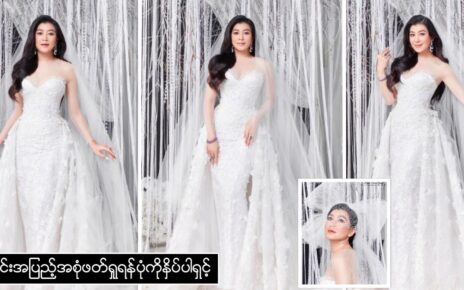












In the ever-evolving landscape of retail, technological advancements continually shape and redefine the shopping experience. Among these innovations, Augmented Reality (AR) stands out as a game-changer, particularly in the realms of virtual try-ons and product visualization. This article delves into the significance and impact of AR applications in retail, focusing on how virtual try-ons and product visualization are revolutionizing the industry.
The Rise of AR in Retail
Augmented Reality has swiftly emerged as a disruptive force in the retail sector, offering unparalleled opportunities for enhancing customer engagement and driving sales. With the advent of AR-enabled devices such as smartphones and tablets, retailers are leveraging this technology to create immersive shopping experiences that bridge the gap between the physical and digital worlds. But what exactly is driving this surge in AR adoption by retailers?
Enhanced Customer Engagement
One of the primary drivers behind the proliferation of AR applications in retail is the desire to enhance customer engagement. Traditional brick-and-mortar stores often struggle to captivate consumers in an increasingly digital age. AR offers a solution by allowing shoppers to interact with products in ways that were previously unimaginable. From virtual try-ons that enable customers to “try before they buy” to immersive product visualization experiences, AR fosters deeper engagement and fosters a sense of connection with the brand and its offerings.
Personalized Shopping Experiences
In today’s hyper-competitive retail landscape, personalization is key to winning over consumers. AR technologies empower retailers to deliver highly personalized shopping experiences tailored to individual preferences and needs. By leveraging data analytics and AI algorithms, retailers can provide recommendations and product suggestions that resonate with each customer on a personal level. Whether it’s recommending the perfect outfit based on style preferences or showcasing complementary products based on past purchases, AR enables retailers to elevate the shopping experience and drive customer satisfaction.
Virtual Try-Ons: Redefining the Fitting Room Experience
Virtual try-ons represent a paradigm shift in the way consumers shop for clothing and accessories. By harnessing the power of AR, retailers can offer virtual fitting room experiences that allow customers to visualize how a particular garment or accessory would look on them before making a purchase. But how exactly do virtual try-ons work, and what benefits do they offer to both retailers and consumers?
How Virtual Try-Ons Work
Virtual try-on technology utilizes AR to overlay digital representations of clothing and accessories onto the user’s real-world environment. By leveraging advanced image recognition and motion tracking algorithms, virtual try-on apps can accurately detect and map the user’s body dimensions, allowing them to see how a garment fits and moves in real-time. This immersive experience provides customers with a sense of confidence and assurance, helping them make more informed purchasing decisions.
Benefits for Retailers and Consumers
Virtual try-ons offer a host of benefits for both retailers and consumers alike. For retailers, virtual try-on technology helps mitigate the challenges associated with online shopping, such as returns due to poor fit or dissatisfaction with the product. By enabling customers to virtually try on items before buying, retailers can reduce return rates and enhance customer satisfaction, ultimately driving sales and revenue. Additionally, virtual try-ons can serve as a powerful marketing tool, attracting tech-savvy consumers and differentiating brands from competitors.
Product Visualization: Bringing Products to Life
In addition to virtual try-ons, AR technology is also revolutionizing product visualization in retail. From furniture and home decor to cosmetics and eyewear, AR enables consumers to visualize how products will look and fit in their own space before making a purchase. But how exactly is AR transforming the way consumers shop for products, and what impact does it have on their purchasing behavior?
Immersive Product Experiences
AR-powered product visualization offers consumers immersive experiences that transcend traditional shopping methods. By superimposing digital renderings of products onto the user’s environment, AR enables customers to explore and interact with items in a lifelike manner. Whether it’s placing virtual furniture in a living room or trying on virtual makeup, AR allows consumers to make more informed decisions and feel confident about their purchases.
Empowering Informed Decision-Making
One of the key advantages of AR-powered product visualization is its ability to empower consumers to make informed decisions. By providing realistic representations of products in various contexts, AR helps customers visualize how items will look and perform in their own lives. This level of transparency and immersion builds trust and confidence, leading to higher conversion rates and increased customer satisfaction. Additionally, AR can help reduce instances of buyer’s remorse by allowing customers to thoroughly evaluate products before making a purchase.
In conclusion, the integration of AR applications in retail, particularly in the realms of virtual try-ons and product visualization, represents a transformative shift in the way consumers shop and interact with brands. From enhancing customer engagement and personalizing the shopping experience to empowering informed decision-making, AR is revolutionizing every aspect of the retail journey. As technology continues to evolve and consumer expectations evolve, retailers must embrace AR as a fundamental tool for driving growth, differentiation, and customer loyalty in an increasingly competitive marketplace. AR Applications in Retail: Virtual Try-Ons and Product Visualization are not just buzzwords; they are the future of retail.
